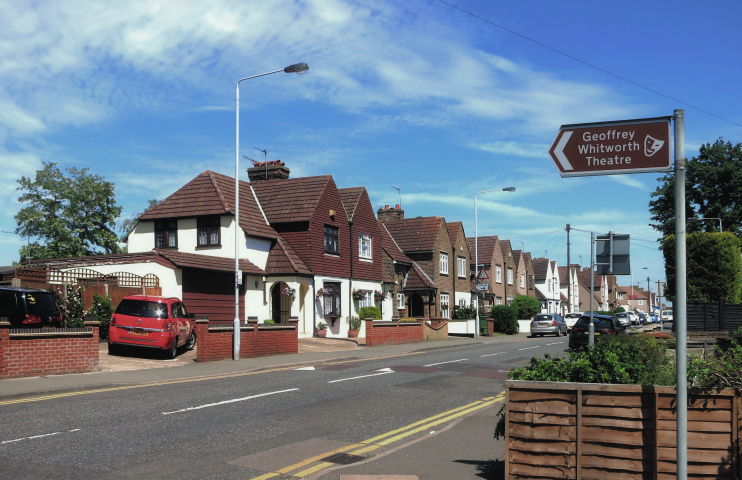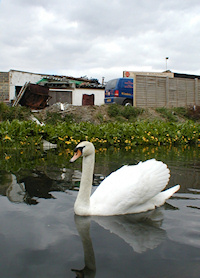Barnes Cray
Barnes Cray, Bexley
An industrial and working-class residential outpost of Crayford, located to the north-west of Dartford, Kent

This was said to have been the site of Ellam, a medieval manor house. Like nearby Barnehurst, it takes its present name from the Barne family, who owned land on the edge of the Crayford Marshes from the mid-18th century.
Maiden Lane has farm buildings and cottages that may be over 300 years old. Iron Mill Lane is named after a mill that made plate for armour. In a ‘swords to ploughshares’ conversion, the mill later switched to grinding Vitbe flour.
Barnes Cray and the neighbouring hamlet of Perry Street became increasingly industrialised in the latter part of the 19th century, with brickworks inland, mills and wharves by the river and factories alongside the railway line.
After the outbreak of the First World War, Vickers laid out a garden village here for employees at its Crayford munitions works, following a precedent the company had set at Vickerstown in Cumbria. Six hundred cottages were built in a variety of styles with the aid of a grant from the War Office. Each of the homes here had at least three bedrooms and more than half were constructed using roughcast concrete blocks.

The iron church of All Saints was erected in 1917. After the war Crayford council built more housing to the north and Kent county council provided Iron Mill Lane county primary school in 1939. The iron church was never upgraded and when it closed in 1960 it was not replaced.
Barnes Cray primary school, as it was latterly called, closed in 2009 and has been replaced by Haberdashers’ Aske’s Crayford Academy, an ‘all through’ 3–18 academy specialising in technology. The majority of the academy’s students are white British and over one third are eligible for free school meals – more than double the national proportion.
East of Thames Road, Barnes Cray remains entirely industrial, with extensive waste treatment and transfer facilities around Crayford Creek.
Geoffrey Whitworth was a leading campaigner for the popularisation of theatre and in 1918 he attended a play-reading by Vickers workers that inspired him to form the British Drama League. The drab but culturally vital building that bears his name was opened in 1959 by Dame Sybil Thorndyke as the home of the British Theatre Group, located on Beech Walk. The theatre has participated in the Royal Shakespeare Company’s Open Stages project, which has resulted in productions such as The Tempest in 2012.

